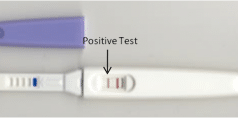
Employer-provided health insurance is a crucial benefit for employees, ensuring access to necessary medical care. However, many health insurance plans impose waiting periods before coverage becomes effective. In this article, we explore the question: Can employers waive health insurance waiting periods? We delve into the definition and purpose of waiting periods, examine the legal considerations surrounding them, and analyze the benefits and potential risks of waiving waiting periods. By understanding the alternatives and steps involved, employers can make informed decisions regarding health insurance waiting periods.
Can Employer Waive Health Insurance Waiting Period?
Yes, employers have the authority to waive health insurance waiting periods. While waiting periods are common, employers can choose to eliminate or reduce them for their employees. However, there may be legal limitations and compliance requirements to consider. Employers should weigh the benefits and potential risks before making a decision to waive waiting periods.
Understanding Health Insurance Waiting Periods
Health insurance waiting periods are periods of time that employees must wait before their health insurance coverage becomes effective. These waiting periods are typically imposed by insurance plans and are designed to prevent adverse selection, wherein individuals only sign up for coverage when they need immediate medical attention. Waiting periods serve as a way to balance the costs and risks associated with providing health insurance.
The duration of waiting periods can vary, but they are generally limited to a specific number of days, such as 30, 60, or 90 days. During this time, employees are not eligible to receive health insurance benefits, even if they have enrolled in the plan. Waiting periods often start from the employee’s date of hire or the date they become eligible for coverage.
The primary purpose of health insurance waiting periods is to ensure stability and cost control for employers and insurance providers. By implementing waiting periods, employers can mitigate the financial risks associated with enrolling individuals who may require expensive medical treatments immediately upon joining the plan. Waiting periods also help to encourage long-term participation in the insurance plan, as individuals are more likely to remain enrolled if they have been with the company for a certain period of time.
However, it is important to note that waiting periods can create challenges for employees, particularly those who require immediate medical care. During the waiting period, individuals may need to seek alternative options for coverage, such as through a temporary insurance plan or other resources. Employers should consider the impact of waiting periods on their employees and balance the need for stability with the employees’ healthcare needs when designing their health insurance policies.
Legal Considerations For Health Insurance Waiting Periods
Legal considerations play a significant role in the implementation and management of health insurance waiting periods. Employers must adhere to various laws and regulations that govern waiting periods to ensure compliance. Here are some key legal considerations:
- Affordable Care Act (ACA): Under the ACA, waiting periods cannot exceed 90 days for group health plans. This requirement applies to both grandfathered and non-grandfathered plans. Employers must ensure that their waiting periods align with this federal mandate.
- State-Specific Regulations: In addition to federal laws, states may have their own regulations regarding waiting periods. Employers should familiarize themselves with state laws that govern health insurance waiting periods, as they may impose additional requirements or restrictions.
- Employment Laws: Waiting periods must comply with applicable employment laws, such as the Family and Medical Leave Act (FMLA) and the Americans with Disabilities Act (ADA). These laws protect employees’ rights and may impact the length or implementation of waiting periods for certain individuals.
- Non-Discrimination Rules: Waiting periods should be applied consistently and without discrimination. Employers must ensure that their waiting periods do not disproportionately affect certain groups of employees based on protected characteristics such as age, gender, or disability.
- Plan Documents And Contracts: Employers should review their health insurance plan documents and contracts with insurance providers to ensure that waiting periods are clearly stated and compliant with legal requirements. It is crucial to have written policies that accurately reflect the waiting period rules and any exceptions or exemptions.
- Notice Requirements: Employers may be required to provide employees with notice of waiting periods, including information on when coverage will become effective and any alternatives or temporary coverage options available during the waiting period.
- Employee Benefit Plan Compliance: Waiting periods must be consistent with the overall compliance of the employee benefit plan, including considerations related to eligibility, enrollment periods, and other plan requirements.
Benefits And Potential Risks Of Waiving Waiting Periods
Waiving health insurance waiting periods can have both benefits and potential risks for employers and employees. It is important to carefully evaluate these factors before deciding to waive waiting periods. Here are some key benefits and potential risks to consider:
- Immediate Coverage: Waiving waiting periods allows employees to have immediate access to health insurance benefits, which can be especially beneficial for individuals who require immediate medical attention or have pre-existing conditions.
- Enhanced Employee Attraction and Retention: By offering immediate coverage, employers can attract top talent and enhance employee satisfaction. Waiving waiting periods may be particularly appealing to job seekers who prioritize comprehensive health coverage.
- Improved Employee Morale: Providing immediate health insurance coverage demonstrates a commitment to employee well-being and can boost morale. Employees feel valued and supported when they have access to healthcare benefits from day one.
- Competitive Advantage: Waiving waiting periods can give employers a competitive edge in the labor market. It sets them apart from other companies that may still enforce waiting periods, making the organization more attractive to potential hires.
Potential Risks Of Waiving Waiting Periods
- Adverse Selection: Without waiting periods, there is a higher risk of adverse selection, where individuals with immediate healthcare needs may join the plan while healthier individuals may choose to delay enrollment. This can lead to higher healthcare costs for the employer and potentially impact the stability of the insurance pool.
- Cost Considerations: Waiving waiting periods may increase overall healthcare costs for the employer, particularly if individuals with costly medical conditions enroll immediately. Employers need to carefully assess the financial implications and ensure they can manage the increased expenses.
- Administrative Complexity: Managing immediate enrollments and coordinating coverage without waiting periods can create administrative challenges for employers and their benefits teams. It may require additional resources and systems to handle the influx of new enrollees.
- Potential Abuse or Misuse: There is a risk that some individuals may exploit the waived waiting periods by enrolling in the plan, utilizing extensive healthcare services, and then discontinuing coverage shortly after.
Alternatives To Waiving Waiting Periods
Instead of completely waiving waiting periods for health insurance coverage, employers can consider implementing alternative measures to address the concerns and needs of their employees. Here are some alternatives to consider:
- Provision of Temporary Coverage: Employers can provide temporary or interim coverage during the waiting period. This can be achieved through short-term health insurance plans or extending existing coverage for a limited duration until the waiting period ends.
- Alignment with Other Benefits: Employers can align waiting periods with other benefits, such as paid time off (PTO) or sick leave. By synchronizing waiting periods with the accumulation of PTO, employees can utilize their accrued leave to cover any healthcare expenses during the waiting period.
- Employer Subsidies for Temporary Coverage: Employers can subsidize the cost of temporary coverage options, making them more affordable and accessible for employees during the waiting period. This can help alleviate the financial burden and ensure continuous coverage.
- Negotiation with Insurers: Employers can negotiate with insurance providers to reduce the waiting period duration or explore alternative options that provide some level of coverage during the waiting period.
- Employee Assistance Programs (EAPs): EAPs can offer additional support services to employees during the waiting period, such as counseling, wellness programs, or access to telemedicine services. This helps employees manage their health needs while waiting for full coverage to commence.
- Educational Resources: Employers can provide educational resources to employees regarding healthcare alternatives, such as community clinics, low-cost healthcare options, or government assistance programs. This empowers employees to seek affordable healthcare solutions during the waiting period.
Conclusion
While waiving waiting periods can provide immediate coverage, it may lead to adverse selection and increased costs. Employers can explore alternatives such as temporary coverage, aligning waiting periods with other benefits, negotiating with insurers, or providing educational resources. By striking a balance between employee needs and financial considerations, employers can create a comprehensive health insurance strategy that meets the needs of both the organization and its employees.
FAQ’s
Can Employers Legally Waive Health Insurance Waiting Periods?
Yes, employers have the authority to waive health insurance waiting periods. However, they need to ensure compliance with applicable laws and regulations.
What Is The Typical Duration Of A Health Insurance Waiting Period?
Waiting periods commonly range from 30 to 90 days, but the specific duration can vary depending on the employer’s policy and legal requirements.
Are There Any Legal Limitations On Waiving Waiting Periods?
While employers have discretion in modifying waiting periods, they must adhere to federal laws such as the Affordable Care Act (ACA) and any applicable state-specific regulations. Waiting periods should also comply with employment laws and non-discrimination rules.
What Are The Potential Risks Of Waiving Waiting Periods?
Waiving waiting periods may lead to adverse selection, increased healthcare costs, administrative complexities, and potential abuse or misuse of coverage.
What Are Some Alternatives To Waiving Waiting Periods?
Alternatives include providing temporary coverage, aligning waiting periods with other benefits, negotiating with insurers, offering employee assistance programs, and educating employees about healthcare alternatives.








